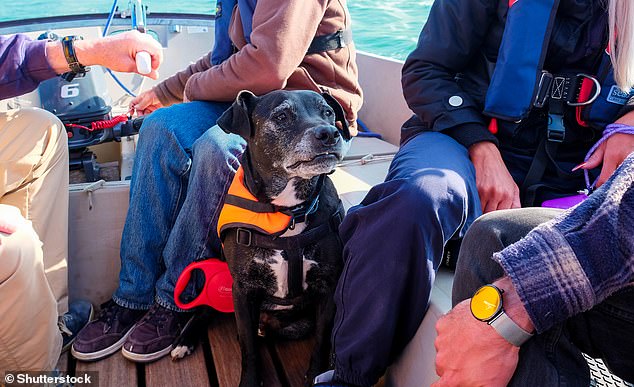With its numerous parks, riverside walks and welcoming pubs, Cambridge sounds like the perfect place to have a dog.
But not for the dog, it turns out.
A large study on canine wellbeing has found the quality of life for man’s best friend varies widely between regions in the UK, with the famous university city ranked the lowest.
The ‘Happy Place Index‘, compiled by the Dogs Trust, analysed a range of factors including a dog’s basic necessities including shelter and healthcare, how much quality time they spend with their owner and how much stimulation they receive.
Mark Rowlands, professor of Philosophy at the University of Miami, devised a system that comes up with an overall ‘canine happiness score’ out of 10.
‘More often than not, we follow a similar routine to our dogs. We eat, sleep, rest and repeat. However, if we’re not interacting with friends, family, or even strangers, we lose the joy and wonder that life has to offer. It’s the same for dogs,’ he said.
‘As much as they need their food and water, they also need an element of community and quality time doing what they love with people they love.’
His system put Plymouth and Liverpool as the happiest places to be a dog – so, where does your city rank?

With its numerous parks, riverside walks and welcoming pubs, Cambridge sounds like the perfect place to have a dog. But not for the dog, it turns out (stock image)
For the study, 5,002 dog owners across the UK were asked questions that covered all aspects of dog welfare.
Overall, the lowest performing of all cities included was Cambridge, which scored 6.32 out of a possible 10. There, long working hours and demanding schedules seem to be squeezing the amount of time owners can spend with their pooch.
Professor Rowlands said that residents here clearly care deeply for their dogs, with 38 per cent likening their pooch to their child.
However it falls down the rankings particularly when it comes to walking their dog less during winter months and leaving their dog alone for long periods of time.
The next lowest on the table was Bristol, scoring 6.65, closely followed by Durham with 6.71.
‘Cities such as Bristol and Cambridge reflect the pressures of urban life,’ the report reads.
‘High-density living, smaller properties and longer working hours restrict both outdoor access and the amount of time owners can spend with their dogs.’
Sheffield, Brighton & Hove and Leeds placed middle of the table, while Belfast and Southampton ranked third and fourth respectively.

According to the study, Plymouth is the best UK city to be a dog in (stock image of a dog in a boat off the coast of Plymouth)
In all, dogs across the UK are clearly well cared-for, the authors said. Almost three-quarters of owners agreed that they take more steps to support their dog’s general health than their own.
Over half of owners said they provide mental stimulation or enrichment for their dogs at least once a day, while 29 per cent said they do so multiple times.
And two-thirds of people confessed they had cancelled plans simply to stay at home in the company of their pet.
However, as a nation, we score particularly low for the length of time we leave our dogs alone in a single period.
The national average of five hours currently exceeds the Dogs Trust recommended maximum of four hours.
‘Taking the time to ensure our dogs are left alone for that little bit less, and trying to ensure walking consistency all year round can pay dividends for our four-legged friends,’ Professor Rowlands said.
The researchers explained that there’s no ‘one size fits all’ when it comes to a dog’s happiness.
A ‘happy place’ can be somewhere physical – like cuddling up next to their owner on the sofa, dozing by the fire or rolling around in a muddy puddle. But it can also be a feeling, he said like the excitement of a new toy, the comfort of being with their favourite humans or the relief of being somewhere safe.
Dr Rob Christley, Honorary Professor of Epidemiology & One Health at the University of Liverpool and Head of Research at Dogs Trust, said: ‘It’s important to note that there always has to be a last place, but this does not equate to failure.
‘In fact, all regions having a score of over six out of 10 demonstrates the nation has an excellent understanding of what it means to provide a Happy Place for their dogs.
‘With opportunity for improvement, we can all work together to rise up the ranks with no better incentive than even happier dogs.’
The report concludes: ‘Ultimately, the Happy Place Index underscores a defining feature of British life – the profound, mutual bond between people and their dogs.
‘Despite regional differences in pace, access and routine, the nation’s commitment to canine welfare is both deep and widespread.’

